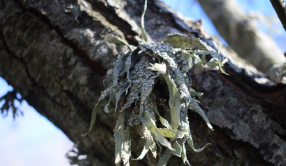First laccase activity determination of Ramalina celastri and its potential functional association to different levels of light exposition
Keywords:
Lichens, Ramalina celastri, enzyme, laccase, ArgentinaAbstract
The few enzyme studies done on lichens indicate that the activity of laccases is might be related to stress response, which is similar to that of saprophytic fungal species. In this study, laccase activity was analyzed in Ramalina celastri (Spreng.) Krog & Swinscow to detect its presence and evaluate its expression in response to light exposure. Specimens of R. celastri were collected from exposed to high or low light levels in the field, then exposed to light and darkness in a humid chamber for 24 hours. To measure laccase activity, the thalli were ground in pH 7 phosphate buffer, then centrifuged to obtain the supernatant, which was used to determine laccase activity by oxidizing 2,6-dimethoxyphenol (DMP) in 50 mM sodium acetate buffer at pH 3.5. The results showed laccase activity in all extracts, with significant differences between individuals exposed to high or low to pH differed among individuals exposed to different light intensities, which could be due to changes in the isoenzyme profile and potential physiological changes.
light and those exposed to darkness after high light exposure. Additionally, the laccase activity profile in relation

Downloads
Published
Issue
Section
License

This work is licensed under a Creative Commons Attribution-NonCommercial 4.0 International License.

